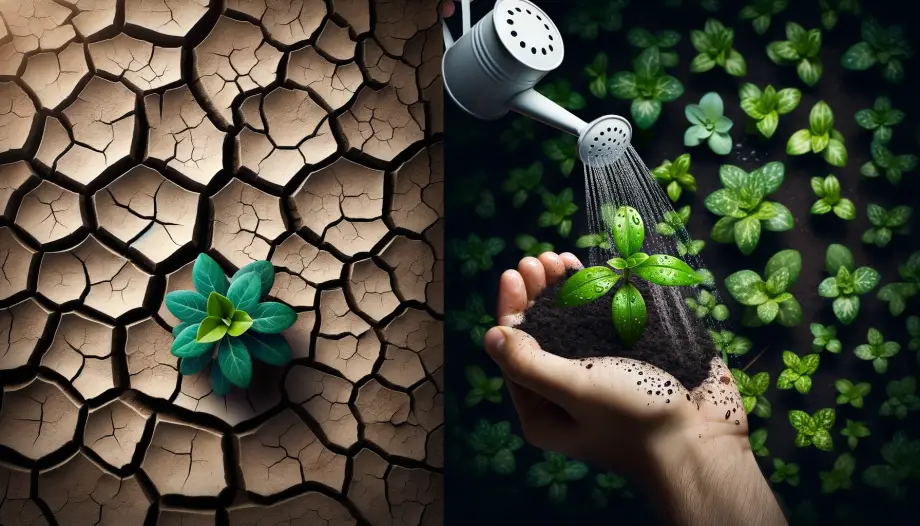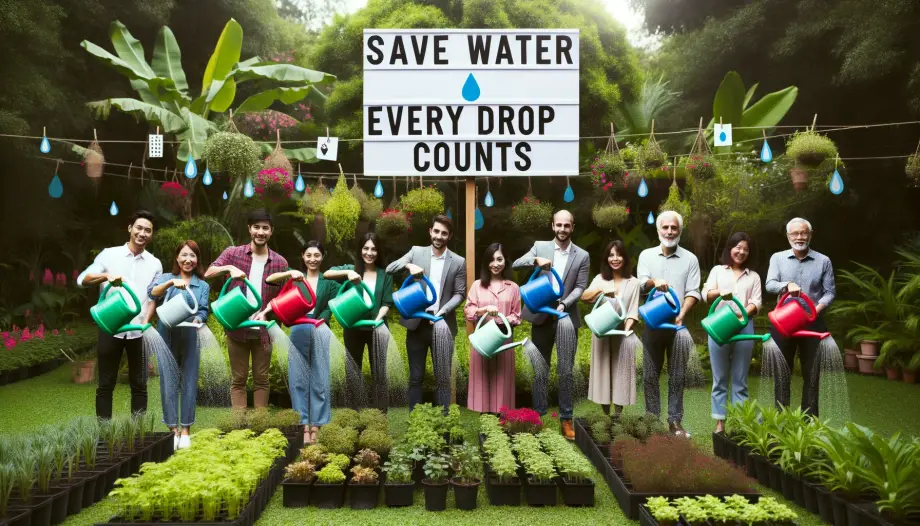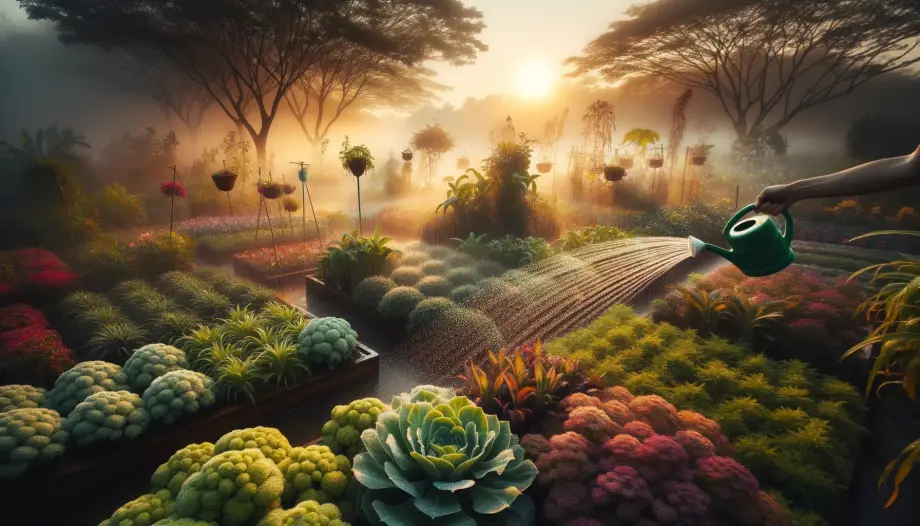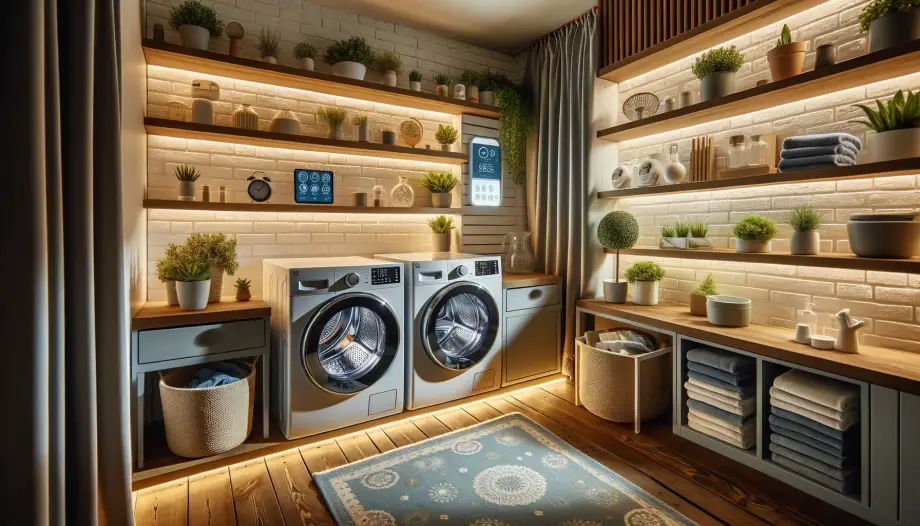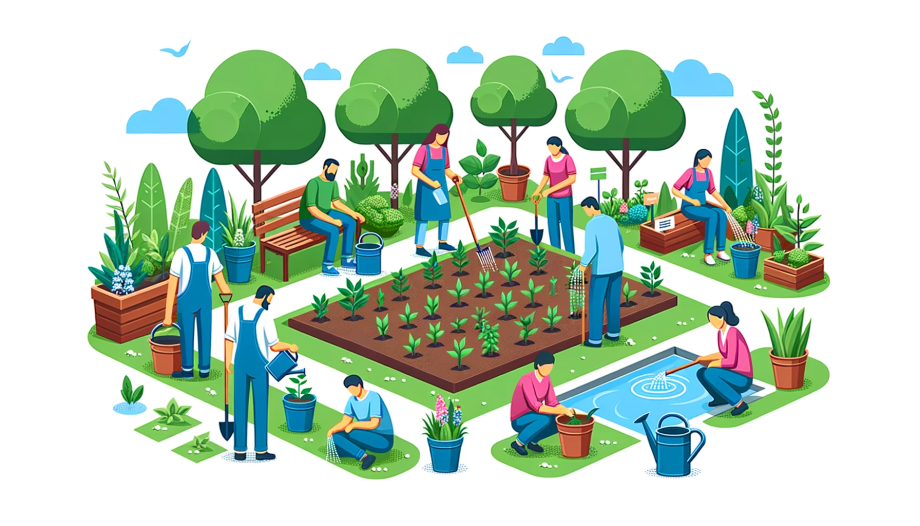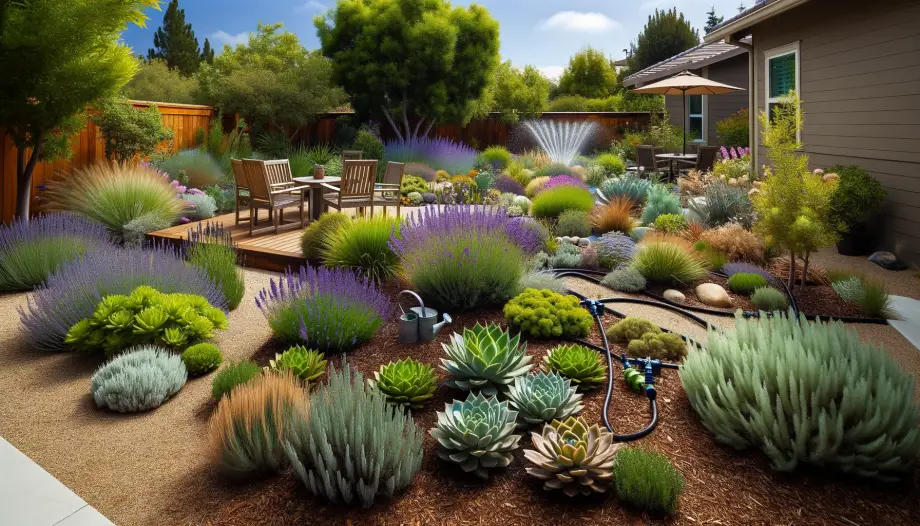
Discover easy ways to conserve water at home, cut down on utility bills, and help the environment. Start your journey towards sustainable living today!
Conserving Water Key Takeaways:
- Adopting efficient shower habits
- Using high-efficiency appliances
- Fixing leaks promptly
- Employing drip irrigation in gardens
- Utilizing rain barrels for outdoor watering
These simple steps contribute to lower utility bills and a significant positive environmental impact.
Ways to Conserve Water at Home
Water is life’s essential elixir, yet often, its value is overlooked.
The increasing global water shortages highlight the urgent need to adopt conscientious practices.
Exploring ways to conserve water at home not only alleviates the strain on this precious resource but also ushers in significant savings on utility bills.
From mindful indoor water usage to employing efficient outdoor watering techniques, each step we take reverberates through the environment, creating a ripple effect of positive change.
So, are you ready to dive into the pool of water conservation and make a splash of difference? Your journey towards a water-wise home begins here.
I. Indoor Water Conservation

Water is a precious resource, the essence of life, yet we often take its abundance for granted. Little do we realize, the gallons of water we mindlessly waste contribute to a larger global dilemma.
The U.S. population has doubled over the past 50 years, while our thirst for water has tripled. With at least 40 states anticipating water shortages by 2024, the need to conserve water is critical. EPA strives to integrate water management best practices at all of its facilities. EPA
By embracing water conservation within our homes, not only do we lessen water wastage, but also witness a pleasant decrease in our water bills.
The simple change of habits and the adoption of water-saving appliances can significantly lower the amount of water used, aligning our daily lives with a more sustainable and responsible living ethos.
Indoor water conservation is a realm where small changes can lead to substantial savings in both water and money.
Let’s explore some practical steps to make a difference:
Efficient Shower Habits
- Take fast showers: It’s astonishing how much water can be saved by reducing shower time. Shorter showers not only save gallons of water but also reduce the energy used to heat the water.
- Replace shower head with water-saving options: Switching to a low-flow showerhead is a simple change that significantly reduces water usage. These efficient shower heads maintain pressure while using less water, making your showers more eco-friendly.
- Install shower timers or devices like ShowerStart to pause the shower once warm: Devices like ShowerStart pause the water flow once it’s warm, preventing water waste while you’re away from the shower. Additionally, installing a shower timer can be a good idea to keep track of your water usage and encourage shorter showers.
Mindful Faucet Use
- Turn off the faucet when brushing teeth: A running tap can waste a lot of water. Make it a habit to turn off the faucet while brushing your teeth, saving several gallons of water each day.
- Partially fill the sink when shaving: Instead of letting the water run, fill the sink with a few inches of warm water for rinsing your razor, significantly reducing water waste.
- Use a glass for mouth rinsing: Similarly, using a glass for mouth rinsing rather than running the tap continuously is an easy way to conserve water.
- Fill the sink with a few inches of warm water for rinsing razors: This echoes the principle of mindful water usage, ensuring that you use only what you need.
Leak Management
- Check indoor faucets for leaks: Dripping faucets can waste a surprising amount of water over time. Regular checks and timely repairs can curb water loss.
- Check water meter for leaks: Monitor your water meter; unexpected spikes in readings could indicate leaks.
- Install adjustable toilet flappers: Adjustable toilet flappers control the amount of water used per flush, helping to reduce water waste.
- Put plastic bottles or a float booster in the toilet tank to save more water: These simple additions can decrease the amount of water used per flush, offering an easy way to cut down on water consumption.
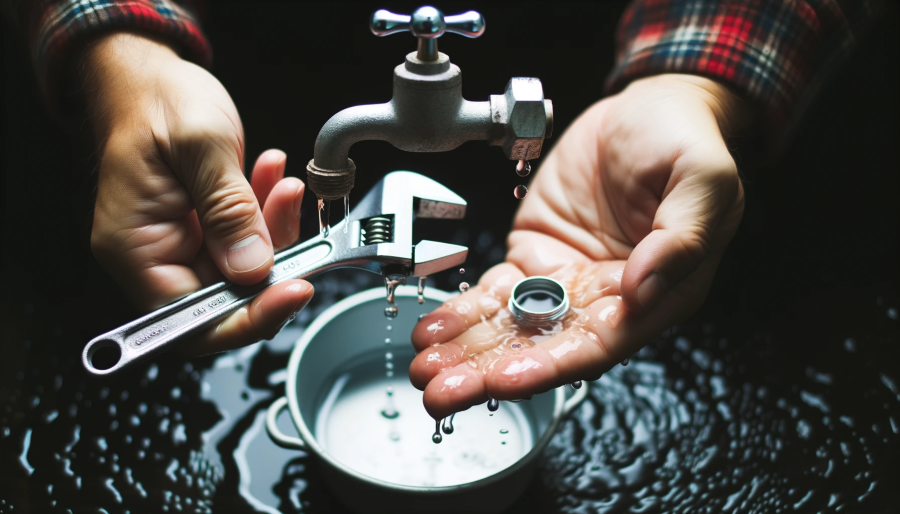
II. Kitchen Conservation
The kitchen, often bustling with activity, is a cornerstone of any home, playing host to a myriad of chores from washing dishes to preparing meals.
It’s also a hotspot for water usage, where gallons flow away with every rinse and wash.
However, with a blend of mindful habits and modern appliances, it transforms into a realm where significant water savings are not only possible but easily attainable.
The quest for ways to conserve water at home finds a fruitful playground in the kitchen.
By tweaking our daily routines and making informed choices, we can reign in water wastage, leading to noticeable reductions in the water meter.
As we venture into the details, you’ll discover that conserving water in the kitchen is a concoction of simple actions and sustainable choices, brewing a recipe for a greener living environment.
So, shall we step into this water-wise culinary journey?
Dishwashing
- Wash dishes with minimal running water: Use a basin of water for washing and another for rinsing to avoid keeping the tap running.
- Wash only full loads of laundry: Running full loads ensures maximum efficiency in water usage for your washing machine.
- Opt for the dishwasher over hand washing, especially water-conserving models: Modern dishwashers, particularly those with an Energy Star rating, are designed to be highly water-efficient, often more so than hand washing.
- Don’t leave the water running for rinsing when hand washing dishes: If hand washing, fill one sink with wash water and the other with rinse water to minimize water run.
Food Preparation
- Thaw food without using water: Plan ahead to allow time for food to thaw in the fridge, saving water and maintaining food safety.
- Drink tap water: It’s a straightforward change that reduces the demand for bottled water, which has a higher water footprint.
- Keep a bottle of drinking water in the fridge to avoid running tap water to cool it off: This simple change ensures cold water is always available without wasting precious resource by running the tap until the water cools down.
III. Outdoor Water Conservation
Outdoor areas are often overlooked, yet they offer a plethora of options to conserve water.
With climate change exacerbating water shortages, adopting water-savvy practices outdoors is imperative. Let’s delve into some actionable steps:
Lawn and Garden
- Consider xeriscaping: Xeriscaping is a landscaping method that utilizes drought-tolerant plants and native plants, reducing the need for irrigation. It’s a great way to beautify your outdoor space while significantly cutting down on water usage.
- Water at dawn: Watering your lawn and plants in the early morning reduces evaporation, ensuring that more water reaches the roots. It’s a simple change that can reduce your outdoor water consumption notably.
- Place mulch around plants: Mulching is fantastic for water conservation. It retains soil moisture, reduces evaporation, and discourages weed growth which competes with plants for water. Additionally, organic matter in mulch can improve soil quality over time.
- Install rain barrels for outdoor watering: Rain barrels collect and store rainwater which can be used for watering plants. They provide an excellent way to harness natural water supply, reducing the need for tap water in your garden.
Vehicle and Driveway
- Take your car to a car wash: Commercial car washes are often more water-efficient compared to washing vehicles at home. They have systems to recycle and reuse water, making them a better choice for water conservation.
- Sweep off sidewalks and driveway: Instead of hosing down your driveway or sidewalks, grab a broom and sweep away debris. It’s an easy way to keep your outdoor space clean while saving gallons of water. The act of sweeping over hosing is a simple yet effective step towards reducing water waste and promoting a culture of conservation in everyday chores.
Through these practices, not only can you significantly cut down on water usage, but also contribute to a broader community effort towards sustainable living.
IV. Advanced Conservation Techniques
Diving deeper into water conservation, there are advanced techniques and appliances that can drastically reduce water usage.
These investments not only pay off on your utility bills but contribute significantly towards a sustainable lifestyle.
High-Efficiency Appliances
- Install a high-efficiency toilet: High-efficiency toilets use less water per flush compared to older toilets. By upgrading, you could save thousands of gallons of water each year, making a notable difference in your water bill and water conservation efforts.
- Change to an HE washer: High Efficiency (HE) washing machines are engineered to use less water and energy. They have better washing action with precise control, ensuring clean laundry while reducing water usage significantly compared to conventional washing machines.
- Consider a High Efficiency Washing Machine: Investing in a high-efficiency washing machine is a wise choice for any household looking to cut down on water usage. These newer models use innovative technology to minimize water use while ensuring your clothes come out clean and fresh.
- The reduced water consumption not only lowers your water bill but also decreases the amount of energy used for heating water, embracing a greener living ethos.
Innovative Systems

- Incorporate irrigation systems: Modern irrigation systems like drip irrigation or soaker hoses deliver water directly to the plant roots, minimizing evaporation and runoff.
- They provide a controlled way to water your garden, ensuring every drop counts towards nurturing your plants.
- Look into gray water conservation: Gray water systems reuse water from your showers, sinks, and washing machines for irrigation purposes.
By diverting gray water to your garden, you recycle a substantial amount of water that would otherwise go to waste, making a positive impact on your water bill and the environment.
- Install composting toilets: Composting toilets are a revolutionary way to save water as they require no water for flushing. They convert human waste into compost which can be used to enrich soil, keeping nutrients and pollutants out of waterways. These systems contribute towards a closed-loop system, reducing water waste and promoting sustainability.
These advanced techniques and appliances embody a long-term commitment to water conservation. The initial investments often lead to significant savings and a reduced environmental footprint, aligning with a sustainable living ethos.
V. FAQs
Embarking on a water conservation journey prompts various questions on how to effectively save water in daily routines. Here, we address some common queries:
Q: How can I conserve water in the shower?
A: Reducing your shower time and investing in a low-flow showerhead are excellent steps.
Additionally, employing devices like shower timers or ShowerStart can help manage water flow, ensuring a refreshing yet conservation-conscious shower experience.
Q: What are some water-saving kitchen tips?
A: Ensure full loads before running the dishwasher or washing machine, and avoid pre-rinsing dishes.
For hand-washing, use a basin instead of continuous running water. In food prep, thaw food in the refrigerator and keep a water bottle in the fridge for cold water, eliminating the need to run the tap.
Q: How can I conserve water in my garden?
A: Utilize drip irrigation systems and collect rainwater in barrels for plant watering.
Embrace xeriscaping with native, drought-tolerant plants. Apply mulch around plants to retain soil moisture, and water during the early morning or late afternoon to minimize evaporation.
Q: Are there any advanced water-saving appliances worth considering?
A: Absolutely! High-efficiency appliances like HE washers and high-efficiency toilets significantly reduce water usage.
Innovative systems like gray water conservation systems and composting toilets are also worthwhile investments. They not only save water but also contribute to a sustainable and eco-friendly household.
VI. Conclusion
Water conservation is a shared responsibility that begins at home. By adopting efficient appliances, embracing innovative systems, and altering daily habits, significant strides can be made.
The outlined measures offer practical avenues to reduce water usage, benefitting both the environment and your utility bills.
Let’s take action towards a more sustainable and water-wise lifestyle, making every drop count.
Reflecting on Indoor Practices
Indoor water conservation is an attainable goal with simple habit alterations.
From efficient shower habits to mindful faucet use and tackling leaks promptly, we can significantly curb water wastage.
Embracing Outdoor Conservation Techniques
The outdoor space offers a realm of opportunities for water conservation.
Whether it’s through xeriscaping, utilizing rain barrels, or choosing eco-friendly methods for vehicle and driveway cleaning, every action counts.
Investing in Advanced Conservation
The leap towards advanced conservation techniques and high-efficiency appliances is a long-term investment in sustainable living.
By incorporating modern irrigation systems, gray water conservation, and composting toilets, we not only conserve water but also contribute to a broader ecological balance.
In summary, water conservation is an actionable endeavor with manifold benefits.
By taking informed steps, we can significantly reduce water usage, lower utility bills, and play a part in alleviating the global water crisis.
The time to act is now, embracing a water-conscious lifestyle for a sustainable future.

